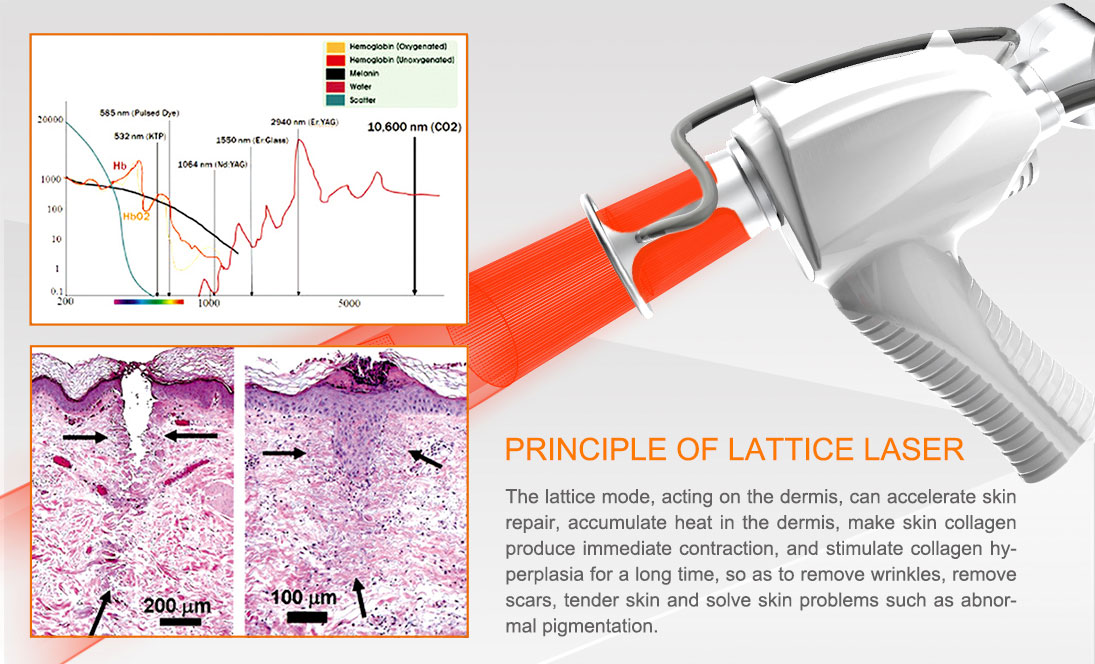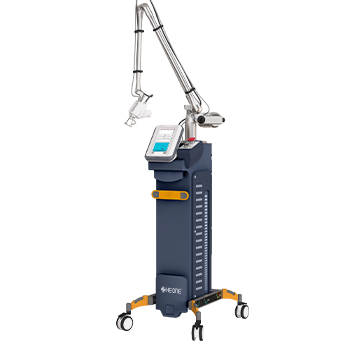Background: Tremendous advances have been made in the medical application of the laser in the past few decades. Many diseases in the dermatological field are now indications for laser treatment that qualify for reimbursement by many national health insurance systems. Among laser types, the carbon dioxide (CO2) laser remains an important system for the dermatologist.

Rationale: The lasers used in photosurgery have wavelengths that differ according to their intended use and are of various types, but the CO2 laser is one of the most widely used lasers in the dermatology field. With its wavelength in the mid-infrared at 10,600 nm, CO2 laser energy is wellabsorbed in water. As skin contains a very high water percentage, this makes the CO2 laser ideal for precise, safe ablation with good hemostasis. In addition to its efficacy in ablating benign raised lesions, the CO2 laser has been reported to be effective in the field of esthetic dermatology in the revision of acne scars as well as in photorejuvenation. With the addition of fractionation of the beam of energy into myriad microbeams, the fractional CO2 laser has offered a bridge between the frankly full ablative indications and the nonablative skin rejuvenation systems of the 2000s in the rejuvenation of photoaged skin on and off the face.
Conclusions: The CO2 laser remains an efficient, precise and safe system for the dermatologist. Technological advances in CO2 laser construction have meant smaller spot sizes and greater precision for laser surgery, and more flexibility in tip sizes and protocols for fractional CO2 laser treatment. The range of dermatological applications of the CO2 laser is expected to continue to increase in the future.
Keywords: CO2 laser, laser ablation, fractional laser, nevus, verrucTremendous advances have been made in the use of the laser in medicine and surgery since the 1990s, and in the field of dermatology efficacy is now recognized in the treatment of angiomas, nevi of Ota, nevus spilus, telangiectasia, and so on, as well as against superficial pigmented lesions, including chloasma, ephelides, and senile lentigines: in fact, the laser is now the treatment of choice for many of these indications. As a benchmark of the acceptance of laser surgery and medicine, some diseases are now indications for the laser that qualify for reimbursement by the Japanese National Health Insurance System. The laser has also been recognized as effective in the treatment of common skin diseases, including but not limited to verruca vulgaris, verruca plantaris, verruca senilis, soft fibromas, condylomata acuminata, syringomas, common warts, vitiligo, leukoplakia, skin ulcers, ingrown toenails, and psoriasis vulgaris. Laser treatment is also used in the field of esthetic dermatology to treat alopecia and acne, and many devices designed for facial cosmesis to treat photo- and chronologically-aged skin, including wrinkles and sagging, have become available.

The intended indications for the lasers used to treat these diseases vary with laser wavelength. Although there are various types of laser, in this article we will describe the fundamentals and clinical applications of the carbon dioxide (CO2) laser, which is the one of the most widely used lasers in the field of dermatology.
Further reading:CO2 fractional laser reconstruction and treatment of the skin










